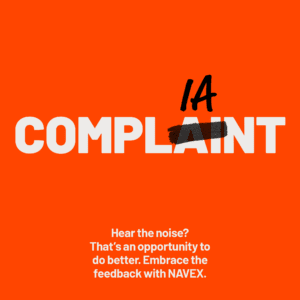Solving Spreadsheet Risks and Errors is Easier Than You Think
A decade ago, a professor of IT management and an authority on bad spreadsheet practices released an analysis on spreadsheet errors. It suggested that at the time, close to 90 percent of spreadsheet documents contained errors. But since then, spreadsheets have become larger, more complex and more prevalent – meaning risk has only increased over time.
It’s been 10 years since Ray Panko, a professor of IT management at the University of Hawaii and an authority on bad spreadsheet practices, released his revised What We Know about Spreadsheet Errors analysis[1]. Sadly, this report spotlights what many spreadsheet users already know; the more things change, the more they remain the same.
Today’s spreadsheets are larger, more complex and more prevalent than they were 10 years ago, yet many things remain the same. Spreadsheets continue to equal speed, flexibility and agility. And they also represent continued exposure to risk and errors. Yet despite longstanding rumors, spreadsheets are not going away.
A case in point is a recent Wall Street Journal article[2] that set off a firestorm after suggesting finance pros drop Excel. This article prompted a follow-up article (by the Wall Street Journal) in response, and the headline says it all: “Finance Pros Say You’ll Have to Pry Excel Out of Their Cold, Dead Hands.” Now that’s a statement!
Recognizing the Problem
In 2002, Congress passed the Sarbanes-Oxley (SOX) Act, which requires corporations to have well-controlled and documented financial reporting systems. As noted by Panko, while preparing for SOX, corporations came to realize that most financial reporting systems use spreadsheets and that these spreadsheets were not well controlled. Sound familiar?
Spreadsheet control issues were brought to the forefront in 2008 with the Lehman Brothers Holdings/Barclays Capital case — the largest bankruptcy case in U.S. history. Contracts that had been marked as “hidden” in the spreadsheet when received by the law firm were added to the purchase offer during the reformatting process, according to the motion. Those contracts weren’t supposed to be part of the deal. Here we are, 10 years later, and spreadsheet-related errors continue to make headlines worldwide. In fact, in March 2018, Conviviality, a U.K. drinks retailer, made headlines when its shares were suspended after a shock profit warning over an arithmetic (spreadsheet) error made by a member of its finance team[3]. The brand and personal costs of failure are higher than ever before.
A Modern Approach
According to Panko, there has long been ample evidence that errors in spreadsheets are pandemic. In large spreadsheets with thousands of formulas, he notes there will be dozens of undetected errors. Panko attributes undetected errors to the lack of formal testing during spreadsheet development.
Panko also noted that testing techniques aimed at finding innocent errors were unlikely to find fraud-based errors, and it would be a major benefit to corporations if spreadsheet controls could reduce the all-too-common occurrences of financial fraud. Fast forward 10 years and Panko must be pleased.
Today’s modern spreadsheet risk intelligence technology addresses the above issues by proactively and continuously managing the compliance risk, process risk and accuracy risk embedded in even the most critical spreadsheet-driven processes. Easy-to-use solutions detect potential errors and risks and provide valuable insight into spreadsheet results that are available for spreadsheet users at every level. These advances include an overlay technology that generates a color heat map that displays and notes potential errors and risks for closer examination.
There is also technology specifically developed to uncover fraud. Using this technology, spreadsheets can be monitored (and located) wherever they are stored on the network or managed when tighter control is required. The choice is up to the organization. Key stakeholders can leverage technology to monitor high-risk (and other) spreadsheets via automated alerts each time a change is made. Version control allows spreadsheet creators and users to monitor for accuracy while keeping a watchful eye for potentially fraudulent activity. White font on a white background, narrow columns and narrow rooms, hidden data in merged cells; these are all areas where fraudulent activity can occur. Today’s automated technology makes testing for these things simple and easy.
A Bright Future for Spreadsheets
Revolutionary progress has been made since 2008. Automated tools now exist that make spreadsheet management easy, eliminating risk exposure – and these tools don’t require lengthy, custom development. Today’s technology is easy to deploy and use. However, lack of awareness has limited its reach.
Through time, organizations have adopted an “it is what it is” mentality when it comes to spreadsheet issues. Some have become complacent to spreadsheet errors and risks. Others have attempted to solve spreadsheet problems with custom developed software that comes with its own set of issues, including long development cycles and painful upgrades that leave corporations no better off.
Spreadsheet risks and errors don’t have to exist. More companies don’t need to end up in the news because of them. Automated spreadsheet risk management technology offers a modern solution to this decades-old issue. Greater awareness of a simple solution can easily break the cycle of bad spreadsheet practices and negative headlines.
[1] Published in the Journal of End User Computing’s Special issue on Scaling Up End User Development Volume 10, No 2. Spring 1998, pp. 15-21 Revised May 2008. What We Know About Spreadsheet Errors
[2] Wall Street Journal, Stop Using Excel, Finance Chiefs Tell Staffs, June 6, 2018
[3] The Guardian, Conviviality seeks £50m in rights issue after financial errors, March 16, 2018



 Diane Robinette is president and CEO of Incisive Software, a provider of innovative risk intelligence spreadsheet management solutions. She has more than 20 years of experience in strategic planning, marketing, product management, business operations and management. Diane has worked in companies from startups to large enterprises in various industries including high-tech, aerospace and defense, telecommunications, financial services and transportation.
Diane Robinette is president and CEO of Incisive Software, a provider of innovative risk intelligence spreadsheet management solutions. She has more than 20 years of experience in strategic planning, marketing, product management, business operations and management. Diane has worked in companies from startups to large enterprises in various industries including high-tech, aerospace and defense, telecommunications, financial services and transportation.






